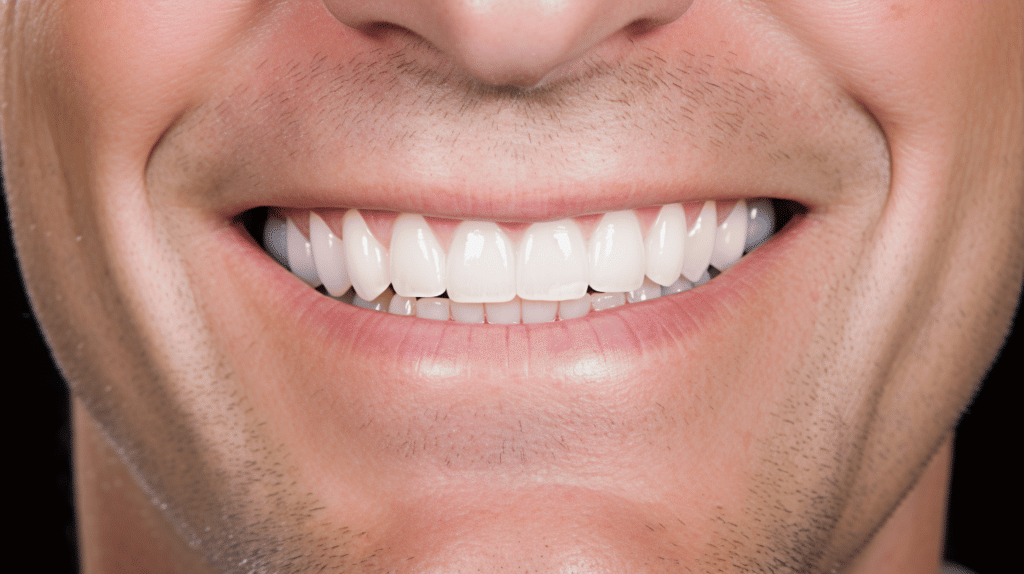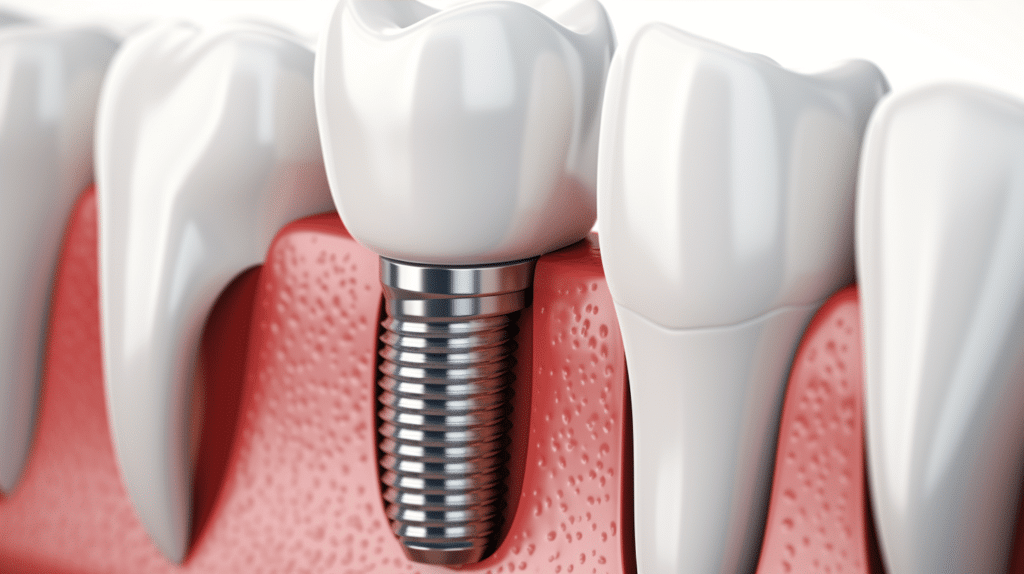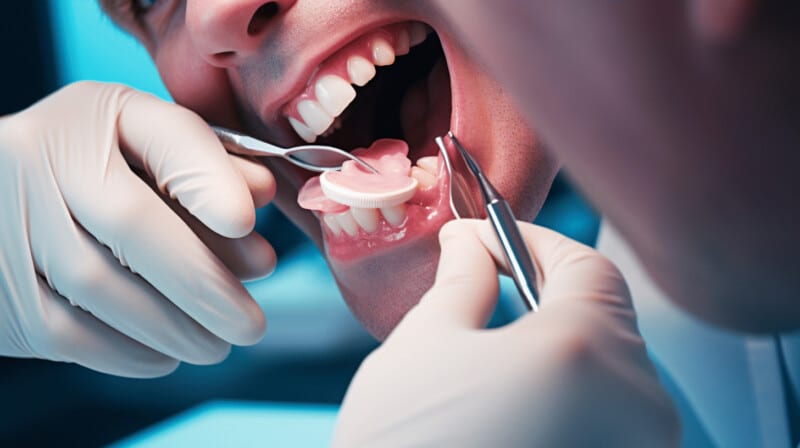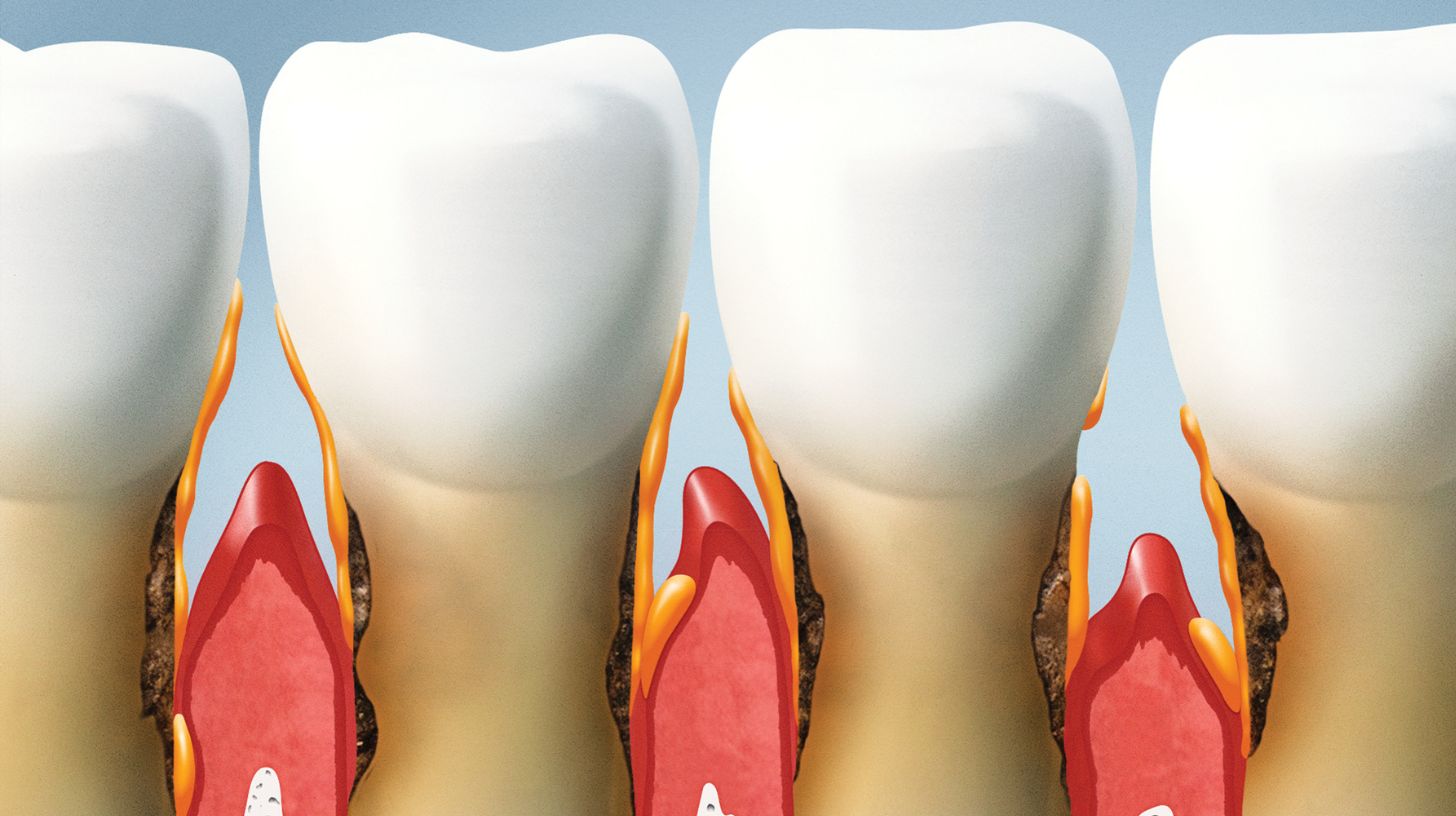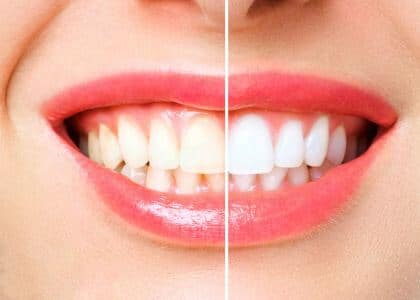Imagine not being able to smile confidently or chew your food properly because you’re missing a tooth or several teeth dental implants 2024. Not a delightful concept, right? 😞 For centuries, this was a harsh reality for many individuals. Welcome to our comprehensive guide on the transformative world of dental implants, the dental game-changer we’ve all been waiting for. 🎉
In this comprehensive guide, we dive headfirst into the evolution of dental implants, revealing its historical roots, and mapping out its progressive journey right up till the present day. We further unravel the revolutionary impact that these little dental wonders have bestowed upon patient experience, overall dental health, and societal perceptions.
With a keen eye on the fast-paced advancement of technology, we project what the future – specifically the year 2024 – holds in terms of innovative techniques, materials, and the predicted adoption rates for dental implants. And we don’t stop there! Dental professionals, we’ve got you covered too, with insightful sections dedicated to discussing the implications of these advancements on dental practices.
Don’t just stand on the sidelines; join us in discovering the exciting realm of dental implants, their monumental influence today, and the future they’re carving in the vibrant landscape of dental health. Ready to get started? Let’s dive in! 🎯
Table of Contents
The Evolution of Dental Implants – Dental Implants 2024
Are you intrigued by the idea that human beings have been innovating solutions for tooth loss for thousands of years? That’s right! The history of dental implants isn’t a recent phenomenon. It goes back to the ancient civilizations who were keen on maintaining a complete smile. This section of our article transports you on a fascinating journey through the ages, exploring the evolution of dental implants. From rudimentary tooth replacements made of shells or stones to the advanced, biocompatible titanium devices used today, dental implants have indeed come a long way!
Historical Overview
The earliest known evidence of dental implants dates back to the ancient Mayan civilization, around 600 AD, where they used materials like carved shells and jade to replace missing teeth.
- Replace a single lost tooth or multiple teeth
- Perfectly mimic the look and feel of natural teeth
- Preserve the structure of the jawbone
This ingenious solution wasn’t just about aesthetics; these early implants also served a practical purpose. Since they stimulated the bone similar to natural teeth, they prevented bone loss—a common side effect of tooth loss that can lead to changes in facial structure.
As we move towards the middle ages, archaeologists discovered remains in France of an individual with an iron false tooth. The iron tooth, considered an extraordinary find, suggests the socioeconomic status of the individual. It highlights that even centuries ago, people understood the importance of dental appearance and were willing to invest in it.
With the dawning of the 20th century, dental advancements took on a new direction. We began to see a unique approach to materials used in implants, a pivot that laid the groundwork for modern dental implants.
Progress in the 20th and 21st Century – Dental Implants 2024
In 1952, a Swedish orthopedic surgeon named Per-Ingvar Brånemark discovered the process of osseointegration. He figured out how titanium could fuse seamlessly with bone, forming a stable, robust bond: a discovery that turbo-charged the development of dental implants.
Today’s dental implants are a world apart from their historical predecessors. They are:
- Structurally composed of a titanium post (mimicking the tooth root), an abutment, and a ceramic crown
- Custom-designed to match natural teeth in color, shape, and size
- Placed with precision using advanced surgical techniques
- Durable, with a success rate of over 95%
While we’ve touched upon the highlights of how dental implants have evolved, it’s safe to say that technological advancements will continue to push the boundaries of what’s possible in dental medicine. Functional aesthetics, patient comfort, and increased longevity of implants are all areas that researchers continue to innovate in today.
And who knows? With ongoing research and development, we might see “tooth re-growing implants” or “self-healing implants” sooner than we expect! The future of dental implants is indeed filled with promise and excitement. And we can’t wait to see what’s next. So, stay tuned for more updates in the world of dental prosthetics, as we continue on this exciting journey together.
Current State of Dental Implants
When it comes to dental health, one thing most of us can agree on is the desire for a perfect smile. Over the last few years, dental implants have emerged as a robust solution for those missing one or more teeth. With their power to restore the aesthetics of a natural smile and enhance functionality, implants have positively shifted the dental industry’s landscape. Yet, just what is the current state of dental implants? This intrigues many of us. So let’s dive into its adoption rate and recent technological advancements. 👀
Adoption Rate
While the adoption rate of dental implants varies across countries, the global trend showcases a steady surge. This surge is primarily due to increasing awareness about dental hygiene and the desire to maintain an aesthetic appearance. Here’s what we found:
- An increasing number of adults are vouching for dental implants over dentures. This preference roots in implants’ long-lasting nature and convenience.
- The overall acceptance rate of dental implants has reached an all-time high, thanks to a drop in its stigma. It’s no longer seen as a cosmetic extravagance but as a solution that boosts one’s health and confidence.
Technological Advancements – Dental Implants 2024
The teeth may be small, but the impact of dental technology is anything but. The world of dental implants has witnessed intense technological advancements recently. Some exciting developments include:
- 3D imaging techniques: These techniques allow for a detailed and accurate visual representation of the jaw, facilitating more precise placements of dental implants.
- Biocompatible materials: Materials like titanium and zirconium have revolutionized implants. They integrate seamlessly with the person’s bone, reducing complications.
- Digital impression systems: These systems provide a more accurate, comfortable, and time-efficient alternative to traditional methods, improving both the patient’s and dentist’s experience drastically.
Technology undoubtedly plays a significant role in the unabated popularity of dental implants. With new innovations and advancements on the horizon, the future of dental implants looks promising indeed.
So, there you have it. Your smile is a reflection of you, and with dental implants backed by soaring adoption rates and tech advancements, there’s a lot to 😁 about.
Remember, staying informed is the key to making the best decisions for your dental health. So, keep that spark in your knowledge-seeking eyes alive, and let’s continue exploring the dynamic field of dental health together.
The Revolutionary Impact
We’re living in an era of rapid technological advancement, where seemingly every week brings us new tools and gadgets that are redefining industries and transforming lives in surprising ways. Just as the smartphone revolutionized communication, another revolution is underway, one that promises to dramatically alter the landscape of dental health. Welcome to the future of dentistry.
Improved Patient Experience
The dental clinic of tomorrow is an inviting place, a far cry from the often-feared dentist’s chair of the past. This new age of dentistry is powered by cutting-edge technology, whose primary aim is to ensure that your journey towards a dazzling smile is as comfortable, efficient, and effective as possible. 💺✨
- Tele-Dentistry: This involves remote dental consultations that allow patients to receive dental care without having to travel. It’s a win-win situation for everyone, offering convenience to patients, and greater reach for dental professionals.
- 3D Printing: Can you imagine walking into a dental clinic with a damaged tooth and walking out the same day with a perfectly fitted crown or implant? That’s the power of 3D printing.
- Smart Toothbrushes: These aren’t your ordinary toothbrushes. Technology now allows us to brush our teeth more effectively by analyzing brushing patterns, movement, and pressure.
Benefits to Dental Health
These exciting technological advances in dentistry aren’t just about enhancing the patient experience. They also yield tremendous benefits to dental health:
- Reduced possibility of errors, leading to better patient outcomes
- Faster procedure times which mean less discomfort for patients
- The ability to craft more precise and better-fitting crowns, bridges, and aligners
Societal Impact
The societal impact of these advancements in dental technology is considerable, reaching beyond the dentist’s office into wider communities, particularly those underserved by traditional dental care.
Undoubtedly, many are gaining access to dental care for the first time thanks to tele-dentistry, and that is something to smile about. 😀 With improved dental health comes boosted self-esteem, and possibly, the end of dental anxiety. Future innovations in dentistry hold the potential to revolutionize not just how we treat our teeth, but how we view dental care. It’s an exciting time to embrace these changes and look forward to the benefits they promise.
Technological advancements are just the beginning of this oral health revolution. How we adapt, adopt, and apply them will determine the true depth of their impact. Innovation, after all, is the key to progression. And in the case of dentistry, it’s a revolution that promises a future of dazzling healthy smiles.
Anticipated Advancements and Trends in 2024
A new year always promises a clean slate brimming with new beginnings and limitless possibilities, and 2024 is no exception. As we watch our calendars flip forward, it’s not merely the date that’s changing. Technology is accelerating at a whirlwind pace, creating an era of innovation and development. Beyond our smartphones and laptops, the world is shifting, evolving brick by brick through advances in technology and a wave of modern materials and techniques. As we embrace the future, let’s dive into the sparkling sea of opportunities that 2024 holds for us! 🔮💡
Technological Innovations
Looking into our crystal ball, we see a world where technology isn’t simply a part of our lives—it IS our life. Advancements are expected in a plethora of fields, offering an amazing technicolor dream of a future. Here are a few gems we anticipate:
- Artificial Intelligence is slated to be smarter and more responsive. Imagine an AI that can predict your next Amazon purchase or Yelp review! 😮
- Expect machine learning to gain a more nuanced understanding of human behavior and nuance.
- Be ready for Virtual Reality (VR) and Augmented Reality (AR) to flourish, allowing us to experience new realms and conduct business in immersive environments.
These are only glimpses; there’s so much more to come!
Materials and Techniques
As if the tech panorama wasn’t fascinating enough, we predict an upswing in the introduction and usage of futuristic materials and techniques:
- We have high hopes for Graphene, a super-material that is stronger than steel and an excellent conductor of heat and electricity.
- Get ready for 4D Printing where objects can self-assemble or morph over time in response to environmental triggers.
- The world of fashion will not lag, with Smart Fabrics that can change color or pattern based on surrounding factors, keeping you in vogue always! 💃
The sky’s the limit when it comes to the revolutionary contributions expected from these innovative materials and techniques.
Predicted Adoption
Of course, it’s not just about the inception of these advancements and trends. It’s also about their adoption. The year 2024 should see a considerable surge in the integration of these new tech advances and materials into our everyday lives. Our homes, workplaces, and recreational spaces will become more intelligent, efficient, and interconnected.
In essence, 2024 is shaping up to a promising year of unprecedented growth and discovery, setting the pace for a future that was once the stuff of pure sci-fi movies. The age of ‘The Jetsons’ is here, ready to transform our everyday world into a paradigm of wonder and amazing innovations! Here’s to embracing the future! 🎉🚀
Implication for Dental Practices – Dental Implants 2024
In the ever-evolving world of dentistry, change is the only constant. Today, let’s delve into the implication of these changes for dental practices. We’ll reflect upon the adoption of new technology, shed light on training and education, and unravel the financial aspects. 🦷⚕️
Adoption of New Technology
The advent of new technology in the dental field has been nothing short of a revolution 😲. Advances like digital impressions, 3D printing, and laser dentistry, to name a few, promise improved patient care and streamlined office operations. However, adopting new technology is not without its challenges:
- Integration: How well does this new technology fit with the existing operating procedures?
- Usability: Is it user-friendly, or does it require extensive technical skills?
- Reliability: What’s the track record of the technology? Can it provide consistent, high-quality results?
Before plunging into any new technology, it’s crucial to perform a strategic assessment answering these key questions. This strategy will ensure a seamless transition and a positive impact on the practice. 💫
Training and Education – Dental Implants 2024
Human capital is the greatest asset of any organization, and dental practices are no exceptions. For successful technology integration, an investment in training and education for the team is indispensable. Here’s why:
- Efficiency: With thorough training, the team can master the new technology and use it to its full potential. 🚀
- Confidence: Knowledge is power! Well-trained staff members feel more confident, leading to increased productivity.
- Continuous Improvement: Technological skills need updating, and ongoing education can boost competency.
Remember, the goal of implementing new technology is to make lives better, not more complicated. As dental practitioners, we owe it to our patients to be on top of our game and deliver the best care possible. 🎯
Financial Aspects
While these technological advancements are fascinating, the financial implications play a crucial role in our decision-making process:
- Investment: A new technology often comes with a hefty price tag. It’s vital to evaluate if it’s a worthy investment by analyzing the return on investment (ROI).
- Operating Costs: Consider everything from utility bills to maintenance costs. Make sure you crunch these numbers before making a decision. 💲
- Financing Options: Lastly, explore different financing options. These days, many manufacturers offer payment plans that can ease the financial burden significantly.
In conclusion, embracing new technology in the dental practice can bring about some fantastic opportunities. It’s about evaluating the options meticulously, investing in quality education, and making smart financial decisions. Let’s take our dental practice to the next level. 🙌
Conclusion – Dental Implants 2024
As we look towards 2024 and beyond, it’s clear that the revolutionary impact of dental implants will continue to transform the dentistry industry and vastly improve the lives of patients worldwide. From better patient experiences to improved dental health and societal impact, the advancements in dental implant technology and innovative materials are things to truly marvel at.
Incorporating these advancements, we at Wilshire Smile Studio are ever prepared to improve the smiles and the dental health of everyone. Our dedicated team ensures you benefit from the latest innovations, to get you that perfect smile you’ve been dreaming of. It may be the year of dental implants, but here, every year is about giving you your best smile.
Just as our understanding of dentistry continues to evolve, so do our services at Wilshire Smile Studio. Come, join us on this remarkable journey into the future of dental care. Just remember, a healthy, beautiful smile is always in style! 💫
Frequently Asked Questions
- What are dental implants and how do they work?Dental implants are artificial tooth roots made of titanium that are surgically placed into the jawbone. They provide a sturdy foundation for replacement teeth and work by fusing with the natural bone to support a dental crown or bridge.
- What are the benefits of dental implants?Dental implants offer several benefits including improved appearance, enhanced speech, increased comfort, better chewing ability, improved oral health, durability, and convenience. They are also a long-term solution and can last a lifetime with proper care.
- Is the dental implant procedure painful?The dental implant procedure is typically performed under local anesthesia, ensuring that the patient does not feel any pain during the surgery. Some discomfort and swelling may be experienced afterwards, but this can be managed with pain medication and proper care.
- Are dental implants suitable for everyone?Dental implants are suitable for most adults with missing teeth, as long as they have sufficient bone density and healthy gums. However, certain medical conditions and lifestyle habits like smoking may affect the success of the implant.
- How long is the recovery period after getting dental implants?The recovery period after getting dental implants varies from person to person. It typically takes a few days to a week to recover from the surgery, but it may take several months for the implant to fully integrate with the jawbone. Your dentist will provide you with post-operative care instructions to follow.


